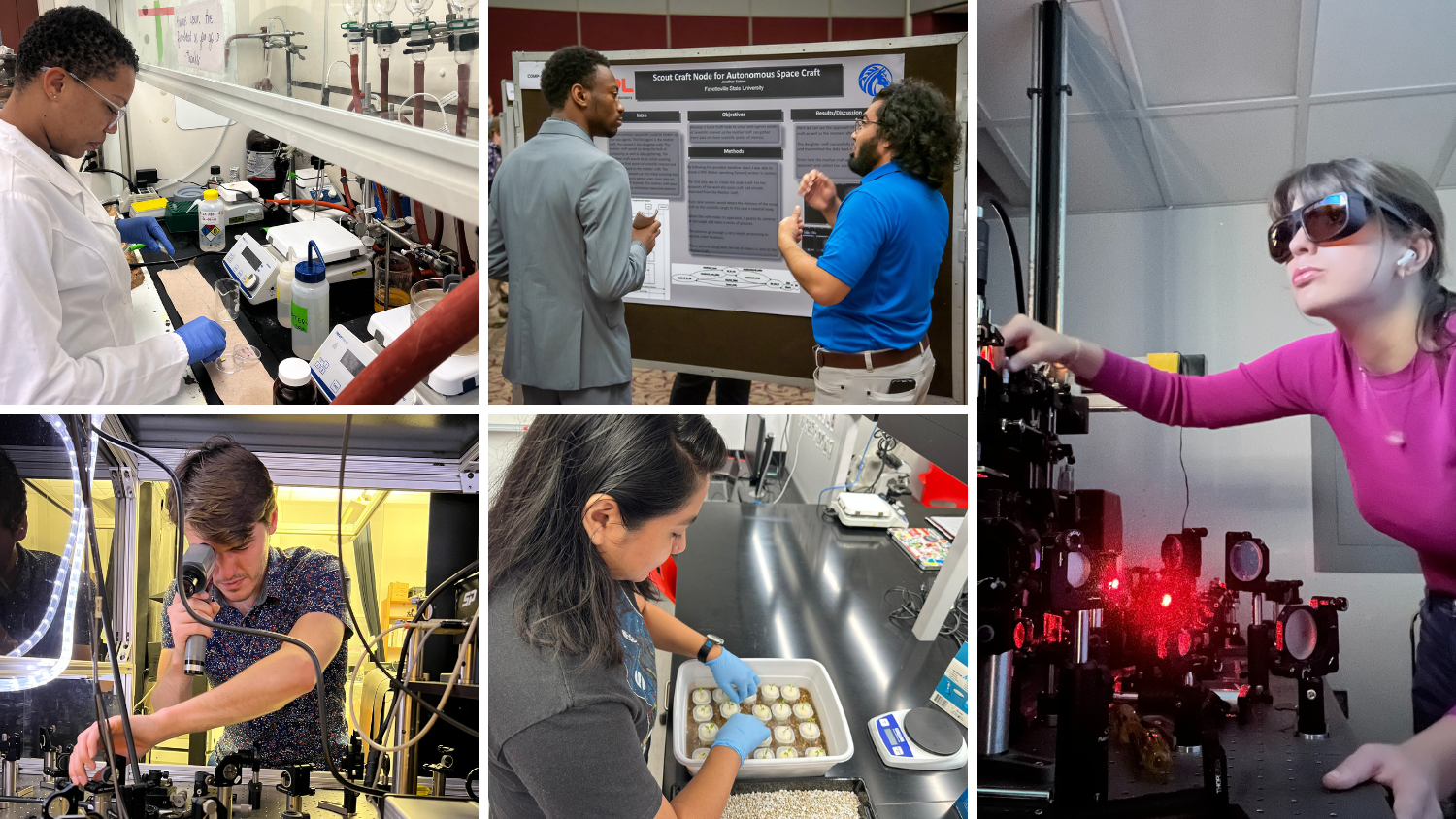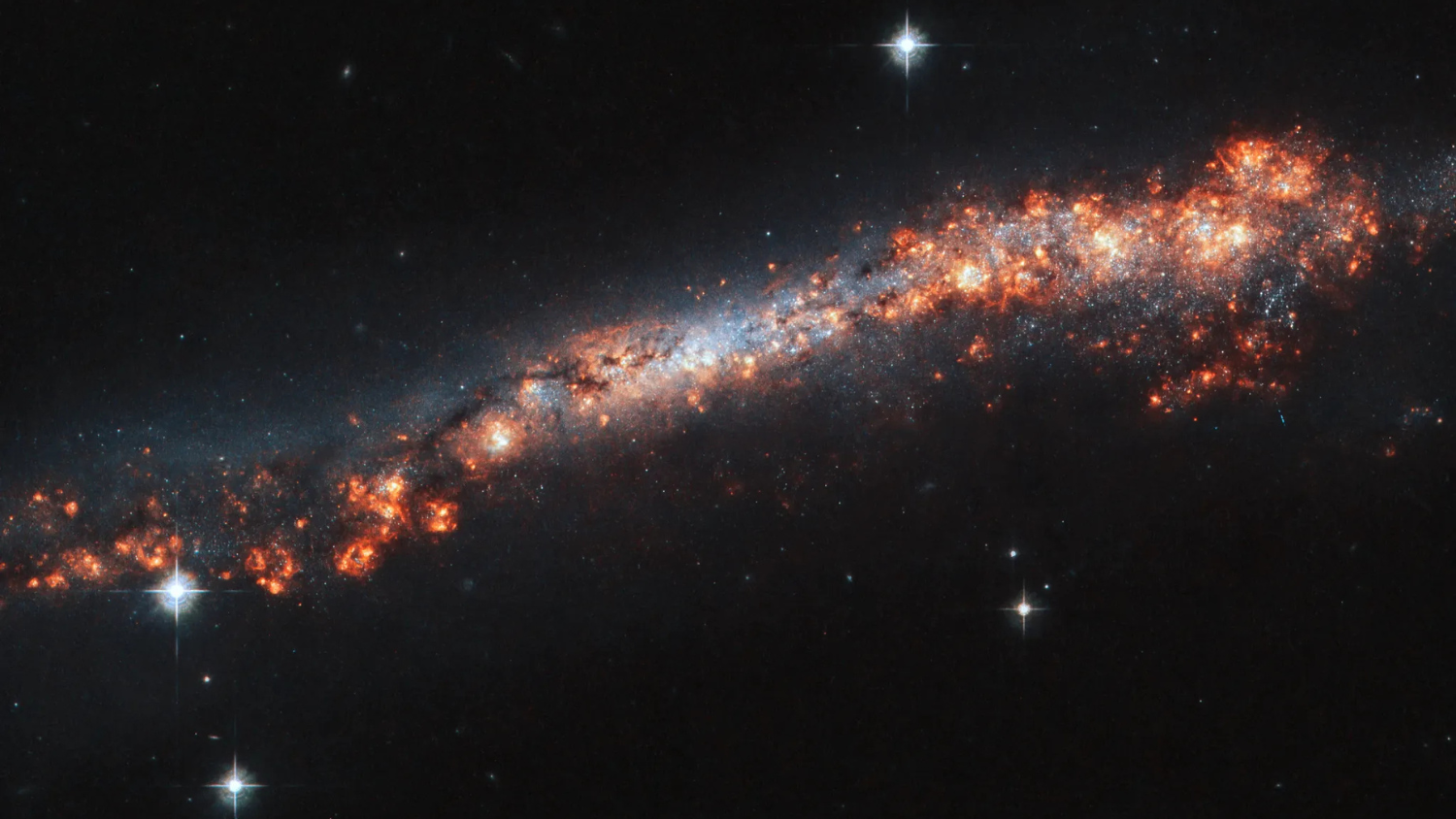Growing Plant Research Capacity in Microgravity Environments
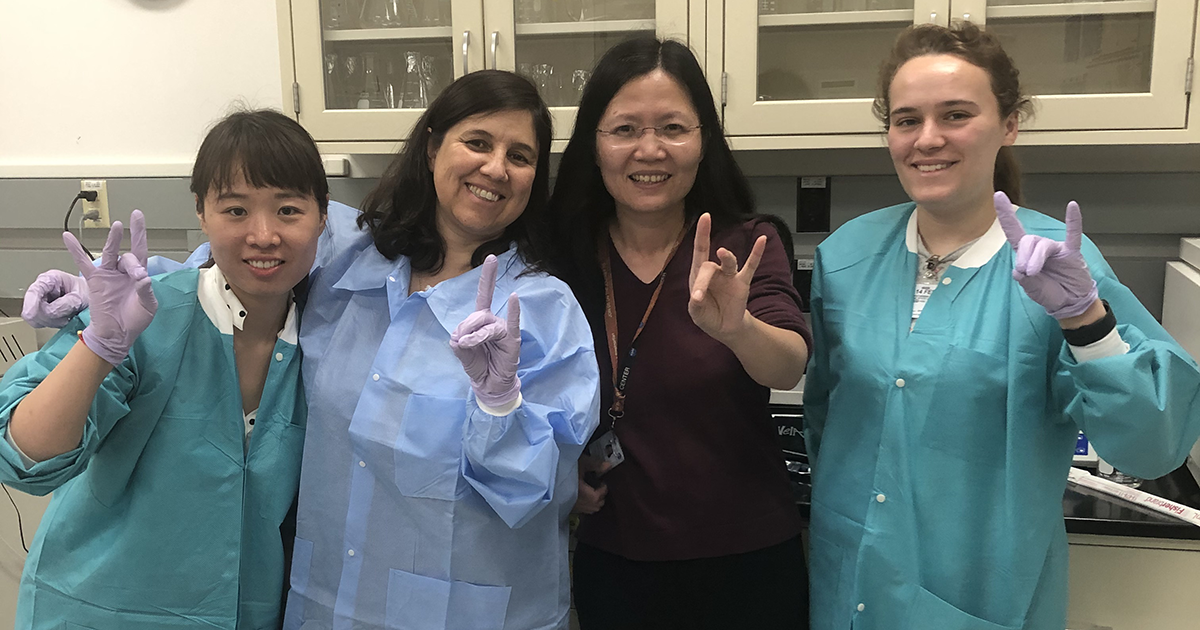
Above: Marcela Rojas-Pierce and her team get ready for an Experiment Verification Test at Kennedy Space Center in 2020, pre-pandemic; from left to right: Mengying Wang, postdoctoral fellow; Marcela Rojas-Pierce, principal investigator; Ye Zhang NASA program officer; Katherine Danz, undergraduate laboratory team member
By Melinda Martinez
In June, SpaceX-22 will lift off — with plant biology projects aboard from labs that trace their roots to NC Space Grant research. Meet the North Carolina State University scientists behind studies that will take place aboard the International Space Station.
Why do biologists grow plants in space?
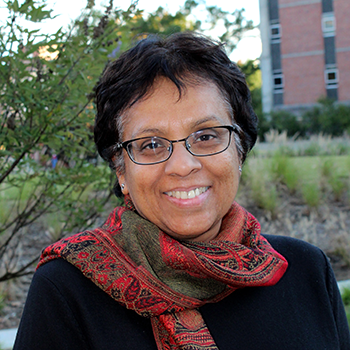
There are multiple reasons biologists attempt to grow plants in microgravity, including answering fundamental questions, such as: How do plants adapt to extreme environments?
That is among topics that Department of Plant and Microbial Biology plant biologist Imara Perera, and her doctoral student Eric Land, are addressing as they focus on plant nutrient and stress responses.
Fellow Department of Plant and Microbial Biology faculty member, Marcela Rojas-Pierce, and postdoctoral scholar, Mengying Wang, are hoping to answer a similar question: How does microgravity affect plant cellular processes?
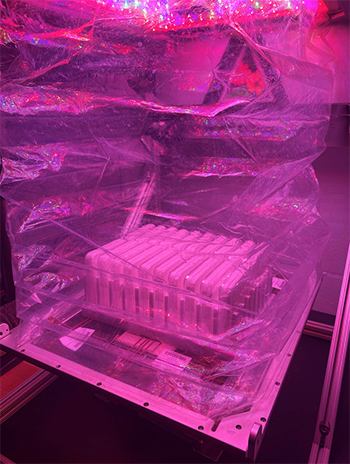
“Throughout history, humans have always taken seeds from novel places and planted them to grow food. That’s essentially what we are doing in the space station,” explains Land, who was a technician in the Perera lab for many years before making the leap to pursue his doctorate.
Astronauts on missions to the International Space Station (ISS) are hundreds of miles from Earth and its food sources, so by growing plants on the ISS they have additional sources of nutrition. Plants also provide a major psychological benefit for astronauts who may begin to feel homesick and need of a reminder of Earth.
To understand how plants respond to more extreme environments, both NC State research teams are pushing the plants’ limits without gravity. The results could have many impacts.
As the population on Earth increases, the need for food crops increases, while the area of arable land for farming decreases. Humans need to become more adept at growing plants in unfamiliar places and in more extreme environments. By pushing limits and testing plant growth in space, Perera and Rojas-Pierces’ research will lead them to understand genetic bottlenecks — and perhaps overcome them on Earth.
What are they studying?
Perera and Pierce-Rojas are studying how microgravity affects very basic cellular processes within the plant thale cress (Arabidopsis thaliana). Thale cress is a very small plant (up to ≈ 22 cm at maturity) that is often used by plant biologists for experiments, because they are easy to grow. Thale cress is also the best-characterized plant, because of the extensive research on its genetics, proteins and pathways.
Essentially, both researchers are growing plants in small containers — but are evaluating the microgravity effects in very different ways.
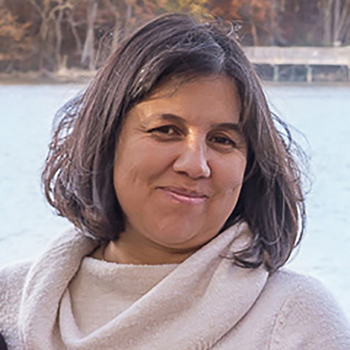
Marcela Rojas-Pierce
Rojas-Pierce and Wang are observing microgravity effects on vacuole fusion. Vacuoles in plants are the largest organelles and important for growth, therefore is chosen for observations because if plants do not have vacuoles, they become stressed and eventually perish.
They are sending two different genotypes of thale cress plants, a wild type (typical form of the species) and a mutant (altered form of the species). The mutant plant has many small vacuoles, which are caused by missing proteins preventing fusion of vacuoles to a become larger organelles. The proteins were removed on purpose, to let Rojas-Pierce better understand the plant’s fusion process.
In the lab at NC State, Rojas-Pierce and Wang have tested the ability of a specific chemical inhibitor to induce the fusion of the mutated plant’s vacuoles. Within about 10 minutes of applying the inhibitor, the vacuoles of the mutant plant fuse.
Using specific instructions from Rojas-Pierce, astronauts will run a similar experiment on the ISS to see how microgravity affects that same reaction. Because the ISS is not yet equipped with microscopes with high enough resolution to view plant cells, an additional chemical will be added to preserve the plant cell structures as they make their way back to Earth.
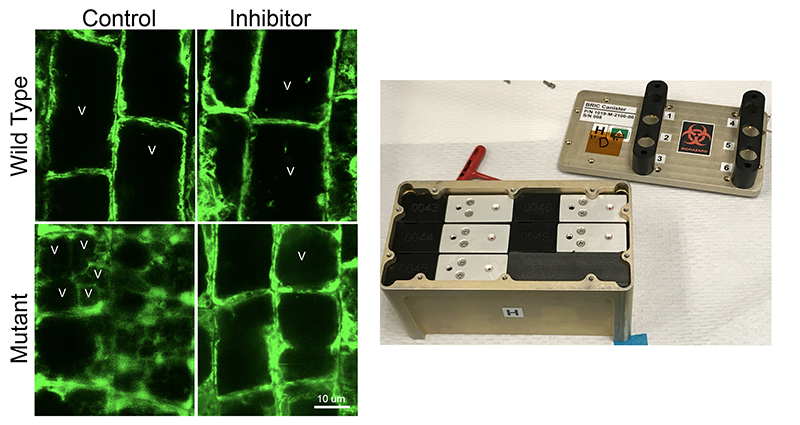
Imara Perera
Perera and Land, on the other hand, are characterizing gene expression and protein accumulation to understand how metabolic pathways are altered by microgravity.
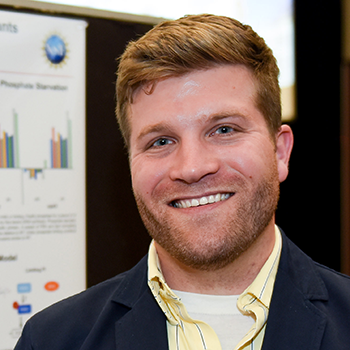
Perera and Land are also growing thale cress plant species in small containers. To reduce the number of factors that could influence their experiment, they are using a centrifuge to simulate Earth’s gravitational rotation. The slow-rotating plant experiments are occurring now in the lab at NC State, and also will be running on the ISS.
“The slow rotation acts like a washing machine, so when you have a spin cycle, it creates the force that goes outward. We’re doing that same thing but using that to replicate gravity,” Land explains.
An additional set of plants will be growing in microgravity, so they will remain stationary on the ISS to compare plant responses and changes in metabolic pathways.
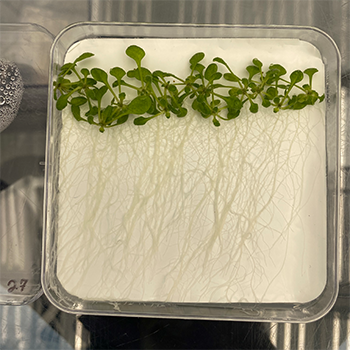
After the experiments are finished, astronauts will freeze samples to be returned either on the same SpaceX return flight or a different flight returning to Earth. Once in the samples are back in the NC State lab, Land will carefully process the small plants, extracting RNA (ribonucleic acid) to figure out which genes were turned on or off.
Land and Perera, working with collaborators Sarah Wyatt and Al Meyers at Ohio University, will also be looking at post transcriptional regulation to see what messages were actually turned into protein at the time they were harvested.
The experimental hardware on the ISS is a newer addition, therefore these experiments will determine if it’s a viable platform for other plant biologists to use. This information will help other researchers who might want to look at plant responses to other gravitational orbits, such as the Moon and Mars.
What is the Space Grant connection?
The SpaceX-22 mission in June will be Rojas-Pierce’s first microgravity experiment funded primarily through NASA. When Rojas-Pierce was an early career scientist in 2010, she received her first gravity-related funding through NC Space Grant, which allowed her to apply to even larger funding through NASA.
Perera will be sending two separate experiments on SpaceX flights, the first one in June 2021. For Perera, this will be her third experimental launch on the ISS. Perera had funding from NC Space Grant in 2006, through an early career faculty grant, for her work on plant responses to gravity and environmental stimuli. Throughout the years, several of her students – graduate and undergraduate – have been funded through NC Space Grant for their research projects. She has also served as a reviewer for the NC Space Grant program.
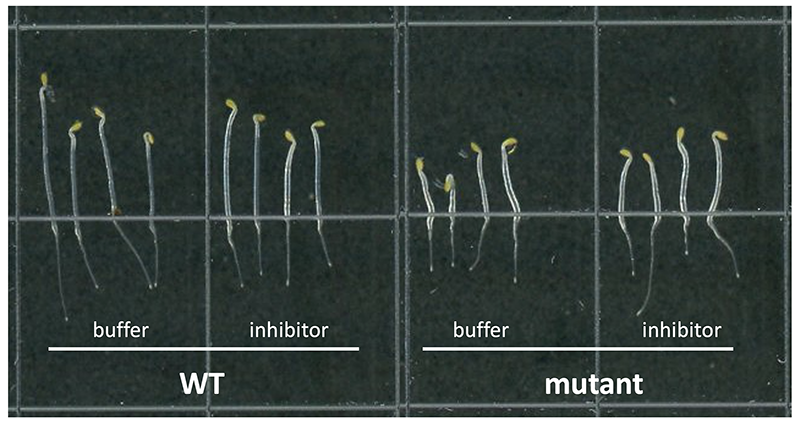
What is their timeline?
Rojas-Pierce and Wang have been preparing test runs of the experiment in the lab at NC State, ensuring the hardware that the astronauts will be using is error-free. After the plants are acclimated to the ISS temperature, they will grow for three days, then the first chemical will be applied, inducing vacuole fusion. After two hours, the second preservation chemical will be added.
Perera and Land are also preparing sampling and running trials on Earth before their experiments are launched. After acclimation on the ISS, their experiments will take place for 10 to 12 days.
Both sets of samples will be returned to the lab in a few months, depending on the timing of the spacecraft’s re-entry. Once the samples are back in the lab at NC State, Rojas-Pierce and Wang will do image and data analysis of the plant cells, which could take about four weeks. For Perera and Land, initial sample processing will take about two weeks, followed by sequencing and data analysis that could take months.
Follow their research journeys on Twitter: Marcela Rojas-Pierce: @rojaspierce1, NC State Plant and Microbial Biology: @NCState_PMB. Stay up to date on launches from NASA Kennedy Space Center here.
